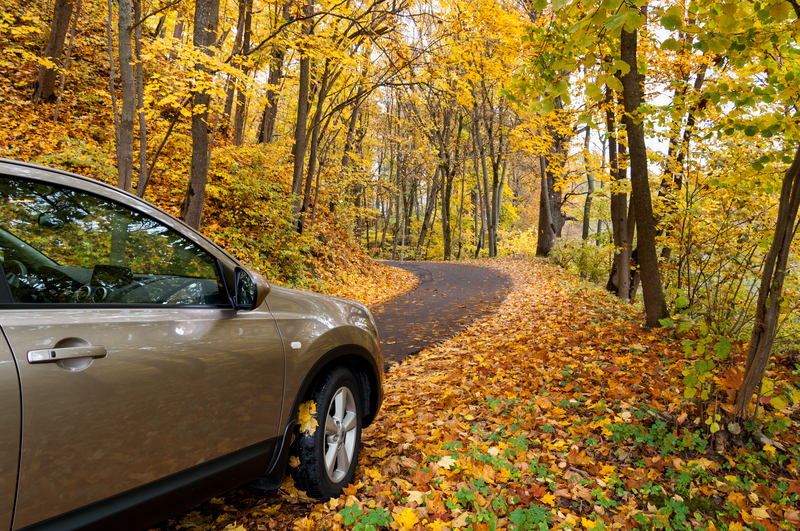You might not be able to always check every inch of your car, but these steps can provide you with an extra measure of protection. The truth is that you can park your car in the most secure garage at your residence, but sooner or later, you will need to take it to the grocery store, the gym or other necessary places. It will be accessible to everyone and anyone so it's always best to take some precautions.
Basic Vehicle Security
- Always search the general area around a vehicle for any explosive devices or suspicious people waiting to ambush you. Always check the outside of a garage for any signs of a force entry before you go in and check garage doors and drive ways for signs of booby traps, land mines and ambushes. The roofs of garages need to secured!
- Turn off all radios and cell phones and check the immediate area surrounding the car for disturbances, wires, oil/fluid stains, footprints, etc. It helps to keep vehicles a little dirty as you will be able to see smears in the dirt if someone was trying to break in.
- Visual check through the windows for anything thing out-of-place or wires, etc.
- Get down on your hands and knees and check underneath the vehicle, inside fenders, wheels and arches for any devices. Also check for cut tires, lose wheel nuts and devices placed under the wheels. This is where a flashlight and a search mirror can come in handy.
- Check the exhaust as it is a very easy place to put an improvised explosive device.
- Open the hood slowly and check the engine. Again it might be helpful to keep the engine dirty as new wires and hand prints are easy to see.
Vehicle Drills
The main thing I tell people is to keep as much space as possible between you and the car in front as this can give you some space to maneuver in congested traffic.
If the criminals or terrorists are in any way professional they will attack you when your car is penned in and you cannot take any evasive maneuvers, not on wide open roads. It’s a common street kid tactics in a lot of Latin American cities to rob cars at traffic lights that are at least two cars back from the stop light with other cars behind them; these cars are stuck and cannot escape.
Security Considerations when using vehicles
-
Always check the area around the vehicle before you approach it.
-
Search the vehicle prior to use for IEDs, electronic surveillance devices and contraband.
-
Always drive safely at the maximum, safest speed, within the legal speed limit.
-
Always carry out basic maintenance checks, before you go anywhere and check that communications work before leaving a safe area.
-
Make sure you know what to do if your car breaks down; will someone come to get you or will you call for roadside assistance?
-
In rural areas things that should be included in your break down kit should include cans of fix-a-flat, air compressor, jump leads, tire plugging kit, tube to siphon gas, gas cans and a tow rope.
-
Know which routes your taking and keep maps in the vehicle for all areas you’re traveling in. Also have alternative routes prepared that have been driven and checked out.
-
Inform personnel at a location 10 to 15 minutes, before your arrival.
-
Constantly check behind you for criminal surveillance vehicles and be suspicious of motorbikes, especially with two people on them.
-
When being followed by a motorbike always watch to see if both the rider’s hands are on the handle bars, if you only see one hand, what is the other holding or doing?
-
Make full use of your mirrors; put a mirror on the passenger side for the passenger to use.
-
Regularly carry out counter-surveillance drills and always be watching for any cars following you or suspicious people along regularly used routes.
-
Keep a good distance from the car in front, so you can drive around it in an emergency and try to avoid being blocked by other vehicles.
-
Never let the vehicle fuel tank to go below half full and know where all gas stations are along your route.
-
Keep doors locked when traveling between locations and in urban areas do not open windows or sunroof more than an inch, so things cannot be thrown in.
-
Always be prepared to take evasive action, be aware of danger points on your routes and drive towards the center of the road to have space for evasive maneuvers.
-
Blend in with your environment; don’t drive expensive cars in poor areas, etc.
-
Be suspicious of all roadblocks, temporary stop signs and car accidents, etc. Never stop to pick up hitchhikers or help other motorists, as these could be covers for an ambush or carjacking.
-
Keep vehicle keys secure and know who has all the spare keys and access to the vehicle.
-
Remember others can monitor tracking devices and help services such as OnStar, then get the details of where you are and you’re routine without the need for surveillance.
-
Wherever legal reverse park; this will help if fast get away is required.
-
Always use seat belts, especially when driving at speed or taking evasive action.
-
Keep a safety knife handy to cut away seat belts and break windows in the case of a crash.
-
When driving on dangerous roads or taking evasive action open the vehicles windows to make escape easier in the event of a crash.
Do you have any advice for increasing vehicle security? Let us know in the comments below!
Article Source: The Prepper Journal
